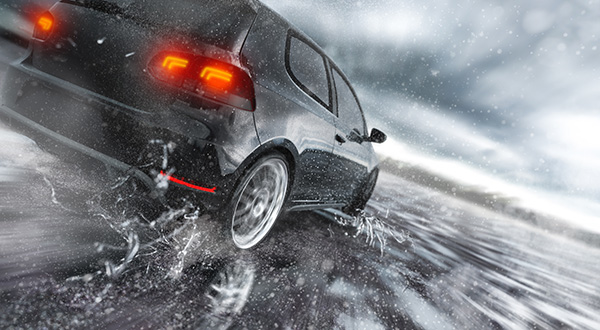
Rainy roads might not seem as dangerous as icy ones, but hydroplaning can make even a light drizzle a serious hazard. One moment, you’re in control; the next, your car feels like it’s gliding over the pavement with no traction. Losing control of your vehicle, even briefly, is terrifying—and it happens more often than you might think.
Hydroplaning isn’t just a problem in heavy downpours. It can happen in light rain, especially if the roads are slick from oil and debris. Understanding what causes it, how to prevent it, and what to do if it happens can keep you safer when driving in wet conditions.
What Causes Hydroplaning
Hydroplaning occurs when your tires lose direct contact with the road due to a layer of water between them and the pavement. Normally, tire treads channel water away, but when there's too much water or the tread isn’t deep enough to disperse it quickly, the tires can no longer grip the road.
Several factors make hydroplaning more likely. Speed is the biggest culprit—the faster you drive, the less time your tires have to push water away. Worn-out tires with shallow tread also increase the risk, as they can’t clear water as effectively as newer tires. Even road conditions play a role—uneven surfaces or areas with poor drainage allow water to pool, making it easier for a vehicle to lose traction.
How to Reduce the Risk of Hydroplaning
Slowing down in wet conditions is the most effective way to prevent hydroplaning. Speed limits are set for ideal conditions, and wet roads are far from ideal. Reducing your speed by 5 to 10 mph in rainy weather significantly lowers the chances of losing traction.
Tires also play a major role. Regularly checking and replacing worn-out tires ensures they can disperse water effectively. Even if your tires look fine, tread depth matters—anything less than 2/32 of an inch is considered unsafe for wet conditions. Keeping tires properly inflated is equally important, as underinflated or overinflated tires have less grip on wet roads.
Avoiding sudden movements helps, too. Hard braking or sharp turns increase the risk of hydroplaning, so smooth driving is key in rainy conditions. If possible, drive in the tire tracks left by other vehicles, as these areas tend to have less standing water.
What to Do If Your Car Starts Hydroplaning
If your vehicle starts to hydroplane, the most important thing to do is stay calm and avoid sudden reactions. Many drivers instinctively slam on the brakes or jerk the steering wheel, but both can make things worse.
Instead, follow these steps:
- Ease off the gas. Let the car slow down naturally rather than hitting the brakes immediately.
- Keep the steering steady. If the car begins drifting, steer gently in the direction you want to go without overcorrecting.
- If braking is necessary, use light, steady pressure. Vehicles with anti-lock brakes (ABS) will handle braking more effectively, but in older cars without ABS, gently pumping the brakes helps prevent skidding.
- Once your tires regain traction, continue driving cautiously and reduce your speed to prevent another loss of control.
When Roads Are Most Dangerous
Many drivers assume the riskiest time for hydroplaning is during a heavy downpour, but the first 10 to 15 minutes of rainfall can be the most dangerous. This is because rain mixes with oil, dirt, and residue on the road surface, creating an extra-slippery layer before it washes away.
Standing water also poses a higher risk. Puddles, especially on highways or poorly drained roads, create prime conditions for hydroplaning. If you see large patches of water ahead, it’s safer to avoid them if possible.
Wet roads don’t have to be a safety risk—proper tires, safe driving habits, and regular vehicle maintenance can keep you in control. If you’re unsure whether your tires are up to the task, Chahel Automotive can help. With five locations in Virginia, we’ll inspect your tires, check your alignment, and make sure your vehicle is road-ready. Call today to schedule an appointment!
- 2084 Chain Bridge Rd, Vienna, VA 22182 – Outstanding service to ensure your vehicle stays in top condition.
- 102 Maple Ave W, Vienna, VA 22180 – Expert care provided by our skilled and knowledgeable team.
- 2961 Hunter Mill Rd, Oakton, VA 22124 – Reliable maintenance and repairs right in your neighborhood.
- 12080 Glade Dr, Reston, VA 20191 – Trusted solutions to keep your car performing at its best.
- 545 Maple Ave W, Vienna, VA 22180 – High-quality service tailored to maintain your vehicle’s longevity.